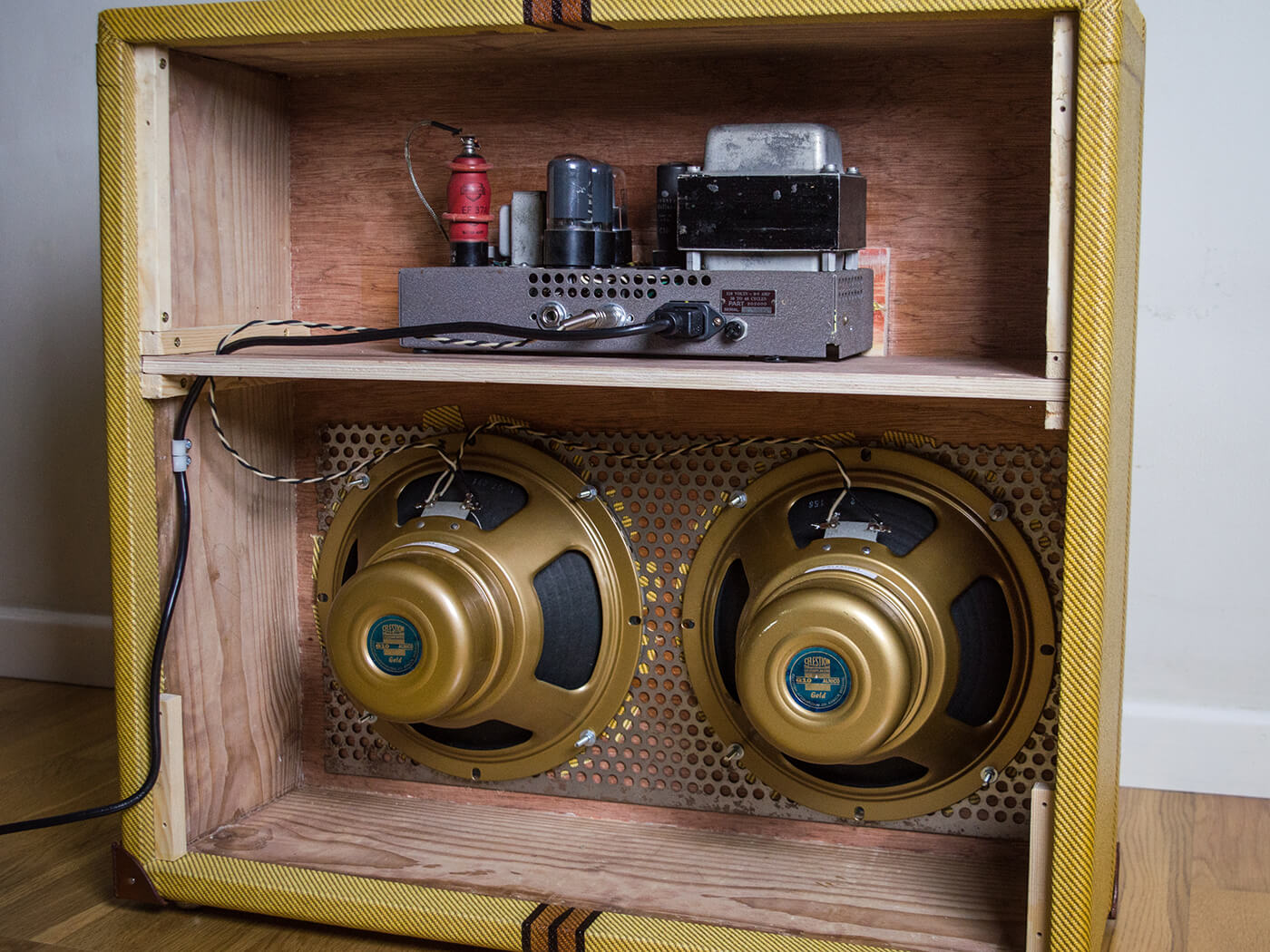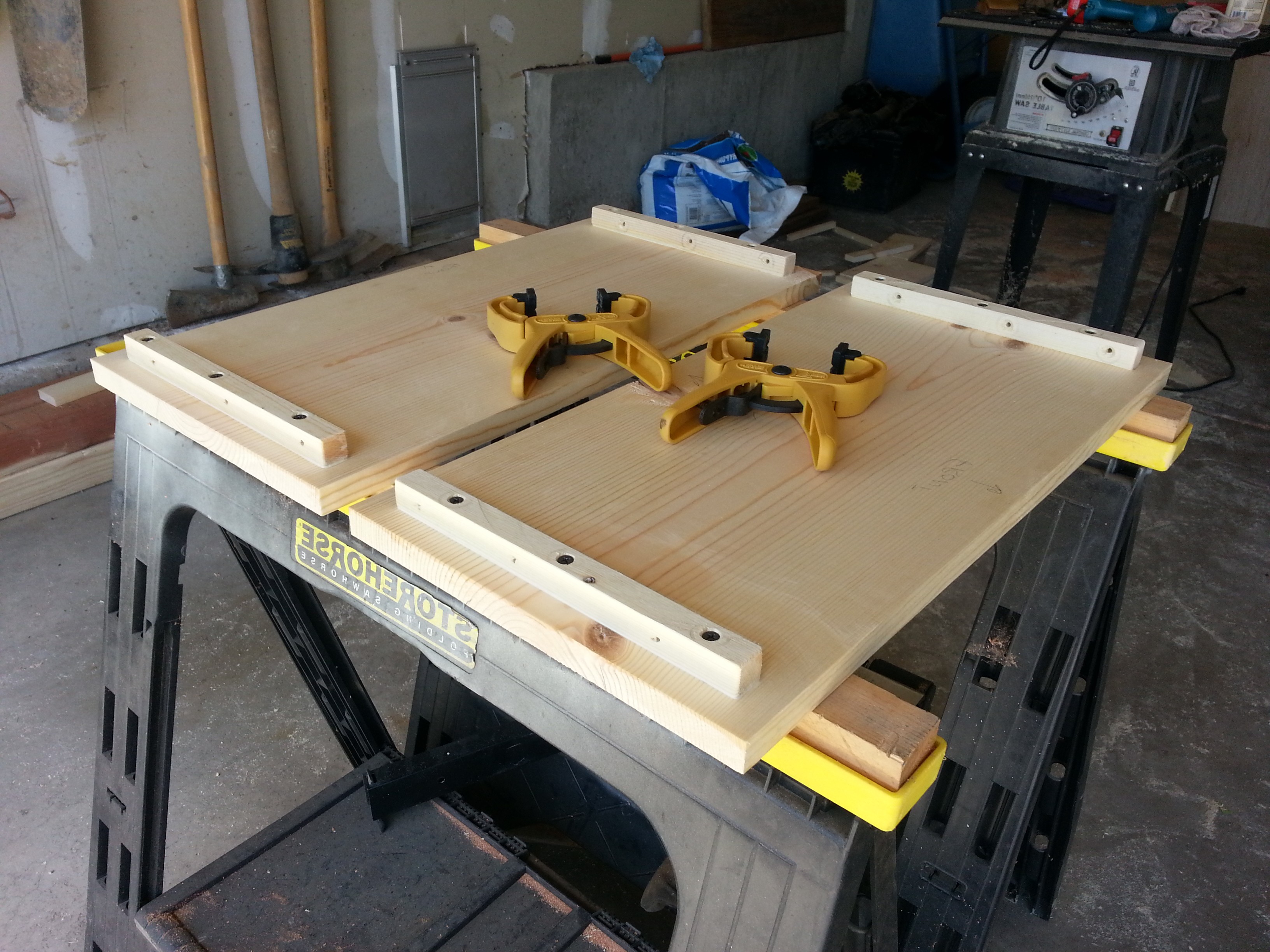Design & Construction of a 2×12 Guitar Speaker Cabinet: Diy 2×12 Guitar Speaker Cabinet Plans

Crafting a 2×12 guitar speaker cabinet offers a rewarding journey into woodworking and audio engineering. This detailed guide provides a comprehensive approach to constructing a robust and resonant cabinet, utilizing readily available materials and straightforward techniques. The process, while requiring precision, is accessible to those with basic woodworking skills. Remember safety precautions throughout the project.
Materials List
The following materials are necessary for constructing a standard 2×12 guitar speaker cabinet. Quantities may vary slightly depending on the specific dimensions of your design. Always purchase slightly more than you need to account for potential errors or imperfections in the wood.
- Two sheets of ¾ inch plywood (or similar cabinet-grade wood), sufficient for the cabinet’s dimensions. Birch plywood is a popular and durable choice.
- Two 12-inch guitar speakers.
- Speaker terminal plate.
- Wood screws (appropriate length and gauge for your chosen wood).
- Wood glue.
- Cabinet bracing (typically strips of hardwood, such as pine or maple).
- Felt or other speaker gasket material.
- Cloth or vinyl covering (optional, for added aesthetic appeal and protection).
- Finishing materials (stain, paint, lacquer, etc., optional).
Jointing Techniques: Rabbet and Dado Joints
This project benefits from the strength and precision offered by rabbet and dado joints. Rabbet joints, where a groove is cut into the edge of one board to receive the edge of another, provide a clean, strong connection, especially for the cabinet’s sides and front/back panels. Dado joints, where a groove is cut across the width of a board, are ideal for joining the top and bottom panels to the cabinet’s sides.
- Rabbet Joints: Strengths include clean appearance and good strength. Weaknesses include potential for tear-out if not cut precisely. Requires a router or table saw with rabbeting capabilities.
- Dado Joints: Strengths include excellent strength and stability, particularly useful for supporting weight. Weaknesses include potentially more complex cutting than rabbet joints, requiring precise measurements and careful execution. Requires a table saw or dado stack.
Cabinet Assembly: Cutting and Joining
Precise cutting and careful assembly are crucial for a resonant and well-constructed cabinet. The following steps Artikel the process:
- Cut the Panels: Cut the plywood into the required dimensions for the front, back, top, bottom, and two sides. Precise measurements are paramount. Use a quality measuring tape and marking tools to ensure accuracy.
- Cut the Rabbet Joints: Cut rabbets into the edges of the side panels to receive the front, back, top, and bottom panels. The depth of the rabbet should match the thickness of the front, back, top, and bottom panels.
- Cut the Dado Joints: Cut dadoes into the sides to accommodate the top and bottom panels. Ensure the dadoes are perfectly aligned and sized to fit the panels snugly.
- Assemble the Cabinet: Apply wood glue to the rabbet and dado joints, then carefully assemble the cabinet sides, front, back, top, and bottom panels. Use clamps to ensure a tight, square fit. Allow the glue to dry completely before proceeding.
- Install the Speaker Baffle: Cut a hole in the front panel for the speakers, ensuring the hole is precisely sized to accommodate the speaker frames. A jigsaw is a useful tool for this task. Attach the baffle to the front panel.
Cabinet Bracing
Internal bracing is essential to minimize unwanted resonance and enhance the structural integrity of the cabinet. A common approach involves using hardwood strips, typically 1×2 or 1×3 inch pieces, arranged in an “X” pattern or other configurations, depending on the cabinet’s dimensions. These braces are glued and screwed to the interior of the cabinet, connecting the front and back panels to provide reinforcement and reduce vibrations. The braces should be strategically positioned to maximize stiffness while minimizing interference with the speakers. Proper bracing significantly improves the cabinet’s sonic performance.
Speaker Selection and Installation

The heart of any guitar amplifier lies within its speakers. Careful consideration of speaker characteristics and their installation is paramount to achieving the desired tone and longevity of your 2×12 cabinet. Selecting the right speakers and mounting them correctly ensures optimal sound reproduction and prevents damage to both the speakers and the cabinet. The following sections detail the crucial aspects of this process.
Speaker Selection Criteria
Choosing speakers for a 2×12 cabinet requires understanding several key specifications. Wattage rating determines the maximum power a speaker can handle before damage occurs; it’s crucial to select speakers with a wattage rating exceeding your amplifier’s output power. Impedance, measured in ohms (Ω), dictates the electrical resistance of the speaker; matching the cabinet’s total impedance to your amplifier’s output impedance is vital for optimal performance and to avoid damaging your amplifier. Finally, frequency response, measured in Hertz (Hz), indicates the range of frequencies the speaker can reproduce effectively. A wider frequency response generally translates to a more versatile and balanced tone. For instance, a speaker with a frequency response of 50Hz-20kHz will reproduce a broader range of frequencies compared to one with a response of 80Hz-15kHz. Examples of suitable speakers include the Celestion Vintage 30 (known for its versatile tone), the Eminence Swamp Thang (a powerful speaker favored for its warm bass response), and the Weber Blue Dog (a popular choice for its clear and articulate sound). These are just examples; many other excellent speakers are available, each with its unique tonal characteristics.
Speaker Mounting Procedures, Diy 2×12 guitar speaker cabinet plans
Securely mounting the speakers within the cabinet is crucial for preventing damage and ensuring optimal sound quality. This involves drilling pilot holes precisely where the speaker mounting holes are located on the speaker’s frame. Use appropriately sized screws, slightly shorter than the cabinet’s thickness, to prevent them from protruding through the back panel. The use of washers is highly recommended to distribute the pressure of the screws evenly across the speaker’s frame, preventing damage to the speaker cone and ensuring a secure fit. These washers should be appropriately sized to fit snugly against both the screw head and the speaker’s frame. Incorrectly sized washers could lead to an insecure mount or even damage to the speaker.
Speaker Placement Optimization
The placement of speakers within the cabinet significantly impacts the sound. In a 2×12 configuration, speakers are typically positioned with a slight gap between them to minimize interference and promote even sound dispersion. However, the exact spacing can be adjusted to fine-tune the cabinet’s sound. For example, a closer spacing might enhance the midrange frequencies, while a wider spacing could emphasize the bass frequencies. This is often determined through experimentation and listening tests. Precise positioning also helps minimize unwanted resonances and standing waves within the cabinet, resulting in a cleaner and more controlled sound.
Speaker Wiring Configurations
Connecting speakers in a 2×12 cabinet can be done in series or parallel configurations. The choice impacts the overall impedance and power handling capacity of the cabinet. In a series configuration, the impedance of the individual speakers adds up. For example, two 8Ω speakers wired in series result in a 16Ω total impedance. In a parallel configuration, the total impedance is calculated as
(1/Ztotal) = (1/Z1) + (1/Z2)
where Z1 and Z2 are the impedances of the individual speakers. Thus, two 8Ω speakers wired in parallel result in a 4Ω total impedance. The series configuration increases the overall impedance and reduces the power handling capacity, while the parallel configuration lowers the impedance and increases the power handling capacity. Choosing the correct configuration is critical to ensure compatibility with your amplifier and to optimize the cabinet’s performance.
Finishing and Refinement
The final stages of crafting your 2×12 guitar speaker cabinet involve transforming the raw wood into a stunning and durable instrument. Careful preparation and meticulous application of the finish are crucial for achieving a professional look and feel, ensuring years of reliable performance. This section details the various finishing techniques, surface preparation methods, necessary tools and materials, and the process of attaching handles and feet.
Finishing Techniques
Several techniques can be employed to finish your speaker cabinet, each offering a unique aesthetic and level of protection. Painting provides a durable, customizable finish available in countless colors and textures. Staining allows the natural wood grain to show through, enhancing its beauty with various shades and tones. Vinyl wrapping offers a quick and easy solution, with a wide variety of patterns and textures to choose from. The choice depends on your personal preference and the overall aesthetic you desire for your cabinet.
Surface Preparation
Before applying any finish, thorough surface preparation is paramount. Begin by sanding the wood with progressively finer grits of sandpaper, starting with a coarser grit (e.g., 80-grit) to remove any imperfections and gradually moving to a finer grit (e.g., 220-grit) for a smooth surface. This process eliminates scratches, ensures even paint or stain application, and prevents an uneven final finish. After sanding, carefully wipe down the surface with a tack cloth to remove any dust particles. This crucial step prevents imperfections from being trapped under the finish. Failure to properly sand and clean can lead to a bumpy, uneven, or dull final product.
Tools and Materials
A range of tools and materials are required for a successful finish. These include sandpaper (various grits), a sanding block or electric sander, tack cloth, painter’s tape (if painting or using vinyl wrap), brushes or rollers (for painting), stain and stain applicator (if staining), wood sealant (recommended before painting or staining), vinyl wrap and application tool (if using vinyl wrap), protective gloves, safety glasses, and a well-ventilated workspace. The specific types and quantities will depend on the chosen finishing technique and the size of your cabinet. For instance, painting a large cabinet might require more paint and a larger roller than staining a smaller one.
Handle and Feet Installation
Adding handles and feet enhances both the functionality and aesthetics of your cabinet. Select sturdy handles appropriate for the cabinet’s size and weight. Recessed handles provide a clean, integrated look, while protruding handles offer a more robust grip. Similarly, choose feet that provide stability and protect the cabinet’s base. Rubber feet are ideal for preventing scratches and vibrations, while metal feet offer a more industrial aesthetic. To attach the handles, drill pilot holes at the marked locations, ensuring they are deep enough to accommodate the screws. Then, attach the handles using the provided screws. For feet, you may need to pre-drill pilot holes, depending on the material and design of the feet. Attach the feet securely using appropriate screws or adhesives, ensuring they are level and provide stable support. Consider the weight of the cabinet and the surface it will rest on when selecting the type and placement of the feet. For example, rubber feet would be preferable for a carpeted floor, while metal feet might be better suited for a hard surface to prevent slippage. A miscalculation here can result in an unstable or poorly-balanced cabinet.
